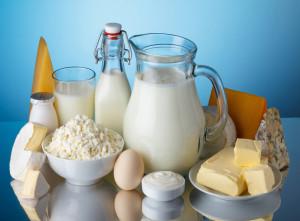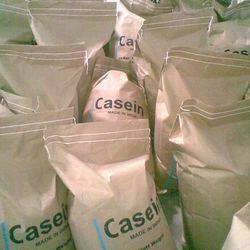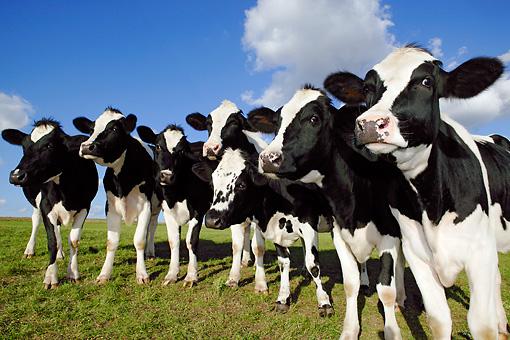 Like many people, I have a love/hate relationship with dairy. I’m a big fan of chocolate and most ice creams, but when it comes to milk itself, I really dislike the flavor. With a few exceptions, I’m pretty anti-cheese, too, which baffles some of my cheese fanatic friends to the point of outrage. In another example of how life isn’t fair, I know several people who love all things dairy but had to stop consuming it all thanks to a lactose intolerance development. (Those are the people who hate me the most, because unlike them, I can have cheese, but I choose to throw away that gift.)
Like many people, I have a love/hate relationship with dairy. I’m a big fan of chocolate and most ice creams, but when it comes to milk itself, I really dislike the flavor. With a few exceptions, I’m pretty anti-cheese, too, which baffles some of my cheese fanatic friends to the point of outrage. In another example of how life isn’t fair, I know several people who love all things dairy but had to stop consuming it all thanks to a lactose intolerance development. (Those are the people who hate me the most, because unlike them, I can have cheese, but I choose to throw away that gift.)
For all of us – those who dislike dairy, and those who are disliked by dairy – creative solutions must be found in order to maintain healthy levels of calcium and to have something to put on cereal. Thanks to a lactose intolerant family member, I’ve become well acquainted with the growing range of cowless milks – rice milk (or, as a young cousin calls it, “rice juice” – even more appetizing), almond milk, soy milk, coconut milk, etc. I can’t say I’m a big fan of those alternatives either, but never would I have thought of 3D printed milk as something that could…well, be a thing. Turns out it is, though – or will be, if some Dutch scientists succeed.
 Researchers from Wageningen University in the Netherlands have partnered with dairy cooperative FrieslandCampina to explore 3D printed dairy products. Why? Cheese addicts, rejoice: one day you may be able to feed your habit without guilt. Unlike cheese alternatives available now, 3D printed cheese would still be dairy-based, just with the bad stuff – i.e., the high cholesterol content – removed. The key is sodium caseinate, a protein found in milk. It’s a natural 3D printing material, as, according to Wageningen professor Maarten Schutyser, it has a “liquid feel” but quickly solidifies once extruded from a 3D printer.
Researchers from Wageningen University in the Netherlands have partnered with dairy cooperative FrieslandCampina to explore 3D printed dairy products. Why? Cheese addicts, rejoice: one day you may be able to feed your habit without guilt. Unlike cheese alternatives available now, 3D printed cheese would still be dairy-based, just with the bad stuff – i.e., the high cholesterol content – removed. The key is sodium caseinate, a protein found in milk. It’s a natural 3D printing material, as, according to Wageningen professor Maarten Schutyser, it has a “liquid feel” but quickly solidifies once extruded from a 3D printer.
 Solidified sodium caseinate does not equal cheese, however, and that’s where things get nebulous. Additional ingredients would have to be added to the printer to get the final extruded product to match the flavor and texture of cheese or butter, and the project is still very much in the experimental stages in terms of what those ingredients might be or how they might be combined. Ideally, the final product would be high-protein, low-fat, great-tasting and lactose-free dairy with a lower environmental impact than traditionally manufactured cheese. But after all that tinkering, is it still “real” milk, or cheese, or butter? (When is a cheese not a cheese? Discuss.)
Solidified sodium caseinate does not equal cheese, however, and that’s where things get nebulous. Additional ingredients would have to be added to the printer to get the final extruded product to match the flavor and texture of cheese or butter, and the project is still very much in the experimental stages in terms of what those ingredients might be or how they might be combined. Ideally, the final product would be high-protein, low-fat, great-tasting and lactose-free dairy with a lower environmental impact than traditionally manufactured cheese. But after all that tinkering, is it still “real” milk, or cheese, or butter? (When is a cheese not a cheese? Discuss.)
It’s easy to be skeptical about such an endeavor. As environmentalists raise concerns about our reliance on livestock, 3D printed dairy doesn’t take cows out of the equation. Cows’ milk is still required to obtain the sodium caseinate for the base of the product, but if sodium caseinate is the only thing still making it technically dairy, why not just stick with the already existing alternatives? (It’s also interesting to note that sodium caseinate is an ingredient in “non-dairy” creamers, so apparently the term “dairy” is up for debate.)
 The environmental benefits would likely come from reduced waste from spoilage during the production process, but again, the question of whether 3D printing dairy products will be worth it is still very much up in the air. Right now, it’s an experiment, and whether or not it will actually come to fruition (milk-ition? I’m sorry. Really, I am sorry.) remains to be seen. The same can be said for most 3D printed food, actually, as researchers study ways to print new foods rather than just extruding chocolate pastes into fun shapes, which is essentially what 3D food printers currently do. The ultimate question is whether 3D printing can be used to create foods that are healthier, better-tasting, or that otherwise hold a big enough advantage over their traditional counterparts to make them more than just a novelty.
The environmental benefits would likely come from reduced waste from spoilage during the production process, but again, the question of whether 3D printing dairy products will be worth it is still very much up in the air. Right now, it’s an experiment, and whether or not it will actually come to fruition (milk-ition? I’m sorry. Really, I am sorry.) remains to be seen. The same can be said for most 3D printed food, actually, as researchers study ways to print new foods rather than just extruding chocolate pastes into fun shapes, which is essentially what 3D food printers currently do. The ultimate question is whether 3D printing can be used to create foods that are healthier, better-tasting, or that otherwise hold a big enough advantage over their traditional counterparts to make them more than just a novelty.
Then there’s the question of public reception. GMOs are the bogeyman of the moment, and raw or paleo diets are the current fad as nutritionists exhort us to stop eating processed foods. Will people trust milk products that have been so altered and, well, processed? Surveys have shown that the majority of people are still pretty queasy about the idea of 3D printed food. It’s all a question of whether scientists truly can develop 3D printed foods whose benefits clearly and significantly present themselves, and even then it’s going to take some serious marketing to get the public on board. But we’ll never know unless we try. What do you think about this? Talk about it in the 3D Printed Dairy forum over at 3DPB.com.
[Source: Takepart]Subscribe to Our Email Newsletter
Stay up-to-date on all the latest news from the 3D printing industry and receive information and offers from third party vendors.
Print Services
Upload your 3D Models and get them printed quickly and efficiently.
You May Also Like
Metal Powder Supplier Elementum 3D Added to $46B Air Force Contract
Elementum 3D, a Colorado-based developer and supplier of metal powders used in additive manufacturing (AM), announced that the company has been added to the vendors list in the fourth on-ramp...
Ursa Major Lands $28.6M AFRL Deal for 3D Printed Draper Engine Flight Demo
The US Air Force Research Laboratory’s (AFRL’s) Rocket Propulsion Division at Edwards Air Force Base has awarded a $28.6 million contract to Ursa Major for follow-on work related to the...
3D Printing Financials: Rocket Lab’s Record-Breaking Year and Over 20 Launches Coming in 2025
Rocket Lab (Nasdaq: RKLB) closed 2024 with its best year yet. The company launched more rockets, signed more contracts, and expanded deeper into spacecraft and satellite production than ever before....
US Air Force Taps Beehive to Study 3D Printed Jet Engines
Propulsion 3D printing firm Beehive Industries secured a contract from the U.S. Air Force Life Cycle Management Center through SOSSEC. SOSSEC is a company that manages Other Transactions Authority (OTA)...


































